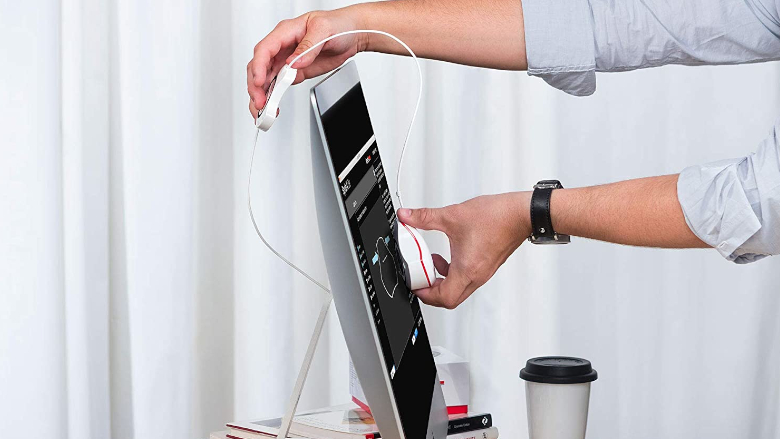
Color is one of the most crucial aspects of visual art, which is why it is important for professional photographers and videographers to have a color-accurate display. Invest in a high-end monitor calibration tool to ensure that you see the exact same hues on your monitor that you would see on a printout or on your client’s monitor. Find the best monitor calibration tools in our list below.
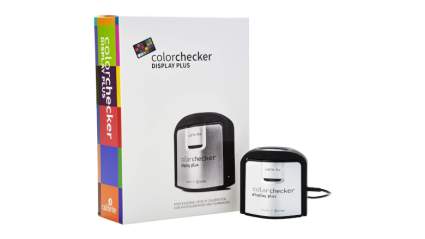
|
Amazon Customer Reviews
|
Price: $319.00 Shop at Amazon | Shop now Read our review |

|
Amazon Customer Reviews
|
Price: $239.17 Shop at Amazon | Shop now Read our review |
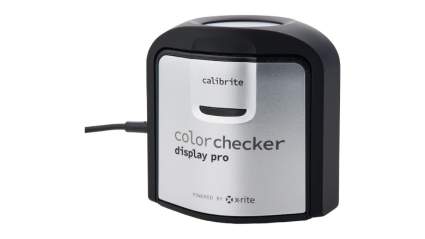
|
Amazon Customer Reviews
|
Price: $279.00 Shop at Amazon | Shop now Read our review |
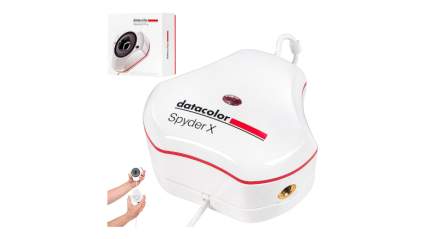
|
Amazon Customer Reviews
|
Price: $192.00 Shop at Amazon | Shop now Read our review |
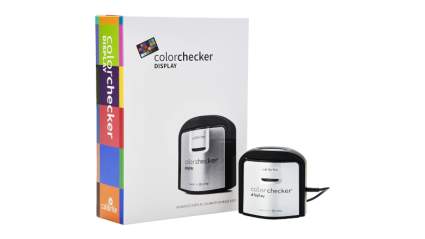
|
Amazon Customer Reviews
|
Price: $289.00 Shop at Amazon | Shop now Read our review |
-
1. EDITOR’S CHOICE: Calibrite ColorChecker Display Plus
Pros:- Measures luminance up to 2000 nits
- Supports HDR displays
- Works with display, projectors, and scanners
Cons:- High price tag
- No dynamic light sensor
- Thin USB cable
Whether you call it the Calibrite ColorChecker Display Plus (CCDIS3PL) or the X-Rite i1 Display Pro Plus (EODIS3PL), this device is recognized as one of the best monitor calibration tools available. The reason it is known by two names is that the original manufacturer X-Rite was bought out by Calibrite in 2021. Since then, Calibrite has laid claim to the decades of dominance over the industry that X-Rite originally boasted.
The Display Plus is the most powerful and customizable device in the ColorChecker Display line, making it a go-to choice for power users. The calibration module of the Calibrite Profiler has both a basic and advanced mode and works with displays, projectors, and scanners.
The basic mode starts by setting your target white point, luminance, contrast, and gamma. You can choose your own or match it to a photo, pre-press, or video. This hardware supports notably high luminance values—up to 2000 nits. That’s the highest I’ve seen, including from the other two Calibrite products. This allows you to dial in the luminance in ultra-bright rooms. The software also supports HDR and video workflows, which is exclusive to the Pro and Plus versions of the ColorChecker. This is crucial if you have an OLED display (or another display with a near-zero black point).
The software then guides you to your target brightness settings before automatically creating your color-correct ICC profile. After, you can view an arrangement of photos with the settings before and after. It’s that easy.
There is a utility panel in the software that allows you to validate your color profile, check your monitor for uniformity, or manage your profiles and presets. The software has both ambient light detection and monitoring. The ColorChecker Display Plus has all the features you could ask for and it is clearly one of the best monitor calibration tools available.
Find more EDITOR'S CHOICE: Calibrite ColorChecker Display Plus information and reviews here.
-
2. Datacolor Spyder X Elite
Pros:- Ambient light monitoring
- Works with laptops, monitors and projectors
- Side-by-side display matching
- Advanced display mapping
Cons:- Software is always running
- High price tag
- No HDR support
The Datacolor Spyder X Elite is among the most well-known monitor calibration tools because it is easy to use and supports a wide range of advanced features. Once you know what you’re doing, color-calibrating your monitor takes less than two minutes.
The USB peripheral pairs with the Spider X Elite software, which is available for Windows and macOS. The software walks you through the process with onscreen instructions. Simply select your preferred presets for white point, gamma, and brightness, and then the software guides you through the monitor settings you need to change to create your new ICC profile. Then you can use the handy before and after review to see the difference. Since this is the premium version of this product, you can access a wide range of extra features too.
For example, you can forgo the presets and set your own calibration options. You can calibrate multiple monitors side-by-side too rather than doing them one at a time. This version works with projectors, while more basic lens-based color engines only support laptops and monitors. Plus, you can use the Studio Match feature to standardize your color, contrast, and brightness settings across multiple workstations in the same room. These features aren’t necessary for everyone though, which is why some users prefer the cheaper and more stripped-down SpyderX Pro (reviewed further down).
Thankfully, the standout feature of this monitor calibration tool is found on both models: ambient light monitoring. If you are willing to run the Spyder X Elite software in the background and leave the light sensor on your desk, then the software can auto-update your brightness settings as the daylight changes in your workspace.
If you only need a basic suite of color profiling tools, then your money would probably be better spent on one of the cheaper options I reviewed, but if you’re after a top-tier device, then the Spyder X Elite is it.
-
3. Calibrite ColorChecker Display Pro
Pros:- Ambient light monitoring
- Fast and easy
- Works with display, projectors, and scanners
Cons:- High price tag
- No HDR support
- Thin USB cable
The Display Pro (CCDIS3) is the middle of Calibrite’s ColorChecker line, offering the higher-end Display Plus’s useful ambient light monitoring feature without the added support for high luminance monitors or HDR viewing modes. I realize that the percentage of consumers who want some but not all of the premium features is somewhat small but this is nonetheless a viable option for them.
Like the other products from this manufacturer, you will need the free Calibrite Profiler to properly utilize the hardware. Again, the only options that are missing from this version compared to the Display Plus are support for HDR viewing and high-luminance monitors. Otherwise, you have the same basic and advanced setup modes as the other Calibrite products.
You can set your own target white point, luminance, contrast, and gamma. You can also set up ambient light monitoring so that the screen can adjust to the changing natural light that illuminates your workspace throughout the day. Options for profile switching and photo proofing are somewhat lacking but this is fine for most users.
If you are looking for a middle-of-the-road colorimeter option, then then the Display Pro is a solid choice.
-
4. Datacolor Spyder X Pro
Pros:- Room-light monitoring
- Basic display analysis
- Fast and easy
Cons:- Software is always running
- No HDR support
- No projector support
Although side-by-side the Datacolor Spyder X Elite has far more features, the Spyder X Pro provides an almost identical experience for the average user. It has the same color calibration module at its core and uses the same free software too. Only the most advanced features are missing.
You still get the same fast and easy calibration process and you can still use it for multiple monitors (but only one at a time, unlike the Elite). Another feature the Spyder X Pro maintains is ambient light monitoring, which can adjust your monitor’s color and brightness profile on the fly to maintain uniformity as your room light changes. You also still have a basic suite of display analysis tools.
As previously mentioned, though, the Pro lacks some of the premium features that you’ll find in the Spyder X Elite. These include the side-by-side display match, StudioMatch across multiple devices, projector calibration, and video calibration features. You also get fewer display analysis tools and a limit of twelve calibration profiles. You can view a more direct breakdown of the two devices on Datacolor’s website. Ultimately, if you don’t expect to use the extra features, then you can still get a calibration tool of high quality at a much more affordable price.
This item also appears on our roundup of the best graphic designer gifts.
-
5. Calibrite ColorChecker Display
Pros:- Ambient light sensing
- Fast and easy
- Works with display, projectors, and scanners
Cons:- No dynamic light monitoring
- No HDR support
- Limited ICC profile storage
The ColorChecker Display (CCDIS) is Calibrite’s entry-level monitor calibration tool but it still offers the same level of accuracy and control as the fancier ColorChecker products. Unless you are a professional or you work in a really bright room, you might not even miss the ambient light monitoring feature.
That’s because ambient light sensing is still a part of the basic monitor calibration module of the Calibrite Profiler software. The software for the CCDIS is the same as for the rest of its product family but it has the most stripped-down feature set.
The most notable limitations are that you have fewer preset options, you cannot set a custom white point or luminance value, and you have fewer gamma options. These aren’t particularly useful features, though, unless you are a power user. After all, matching widely accepted standards like a white point of 6500K and a gamma value of 2.2 is the main reason for using a color calibration tool. Only power users will be disappointed by the absence of these features.
Bargain hunters, however, will be thrilled, as the CCDIS is only a fraction of the price of some of Calibrite’s fancier color calibration tools. And that ensures maximum bang for your buck.
Do You Really Need to Calibrate Your Monitor?
This may come as a surprise, but unless you own a high-end photo/video production monitor, it is likely not ship color-calibrated right out of the box. And even if it is, the colors will only look accurate if your workspace's lighting is identical to that for which they calibrated the monitor. For most users, this goes unnoticed, but photographers and videographers will eventually run into issues when a color shows up differently on paper or a client's monitor than it does on their monitor at home.
Additionally, the Professional Photographers of America reports that monitors shift in color, contrast, and brightness as they age. This isn't as prevalent as an issue with LCD displays as it once was but it is still a noticeable difference, especially if your monitor is several years old and has never been calibrated.
Ultimately, color-correcting your monitor isn't truly necessary unless you are doing color-sensitive work, but since you've made it this far into your research, chances are that this applies to you.
How Do You Calibrate Your Monitor?
All of the monitor calibration tools I tested come with a software wizard to walk you through the process, so thankfully you don't need too thorough of an understanding to successfully color-calibrate your monitor. That said, it can help to understand the basic process before diving in so allow me to tell you how to calibrate your monitor like a pro.
- Allow your monitor approximately 30 minutes to warm up and ensure no ambient or natural light is shining directly onto the display. Disable any color-correcting apps like True Tone, night mode, or HDR mode.
- Install and run the software included with your monitor calibration tool.
- Plug your monitor calibration tool into your PC's USB port and hang it over the front and back of your display when prompted by the software.
- Follow the onscreen steps for adjusting your monitor's color, brightness, contrast, and gamma. Once you are satisfied, use the software to save the color profile you've created as an ICC file so other software can access these settings as needed.
- Repeat every 3-4 weeks or whenever you relocate your workstation.
If you weren't hung up by any of the terms I used in these instructions, then you'll likely benefit from the advanced setup feature available in your color calibration software of choice. The advanced settings provide you with a much wider suite of tools to work with but you will have to do some additional research if you really want to use these advanced features to their full effect.
Is Monitor Calibration Worth It?
As you've likely already noticed, a monitor calibration tool is a fairly expensive peripheral. And if you've made it this far without one, you might be wondering if it's a cost you can skip.
However, if you are a professional photographer or graphic designer, then I would argue that you cannot skip buying a monitor calibration tool. It should be viewed as yet another of your many expenses. But what about for those prosumers?
Obviously, the answer depends on how much disposable income you have to put toward your hobby. But if you have the funds available, then you should definitely invest in a monitor calibration tool.
After all, what might look like a stark white on your display might look blue and icy on another. And that could completely change the tone of an image for the worse. So save yourself the hassle of ever having to reorder prints because the colors were off.